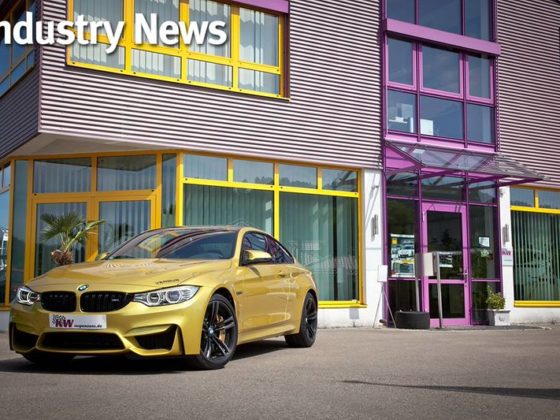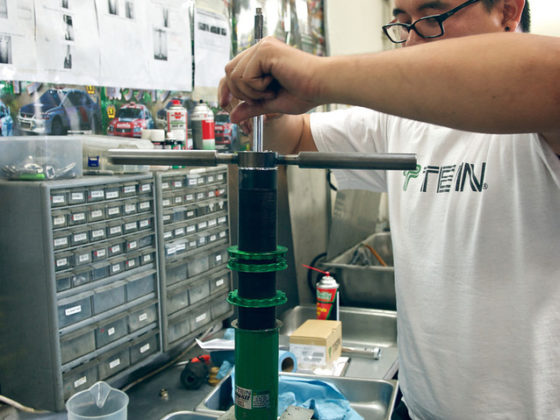We spent two days with the McLaren MP4-12C on the street and hot lapped it around Buttonwillow’s 13CW configuration to see if the 12C really is the best supercar that you can use as a daily driver. Is it a modern day NSX in this regard? Did it turn the fastest production car lap at Buttonwillow? Read on to find out…
Our test car is a 2012 McLaren MP4-12C which was updated to the current 2014 software programming that bumps the power output a little, improves the suspension programming and completely revised the entertainment system. More on that later. But first we need to take a look back to see how the 12C came about.
As two of the greatest motorsport powerhouses of all time, McLaren and Ferrari have been going at it in Formula 1 for nearly 50 years. For the majority of this time, the rivalry didn’t take it to the streets since McLaren was not a street car manufacturer like Ferrari, but that would change in 1992 with the launch of McLaren Automotive and one of the greatest street cars of all time: the McLaren F1.

The father of the McLaren F1 was none other than McLaren’s Formula 1 Technical Director, Gordon Murray who owned a Honda NSX and viewed it as inspiration for a reliable supercar that you could actually use every day. It was also his ride quality and performance benchmark. Prior to the 1990s supercars were inconvenient, uncomfortable, unreliable, and while lust worthy; were only enjoyable for short periods of time or on weekends, like a supermodel. We can credit the NSX for raising the bar and showing the world that with proper engineering, a supercar can be reliable and actually driven every day. While it took Ferrari nearly a decade to catch up to the NSX in this regard, McLaren was able to execute this feat on their first attempt in a production car with the F1.
As an engineering firm, McLaren spared no expense in producing the F1. From its unique central driving position and 3-seat layout, industry-first carbon monocoque tub, down to its 24-karat gold engine bay lining; the F1 is a packaging masterpiece built to be the ultimate supercar. While McLaren’s Grand Prix cars were powered by Honda at the time, it was BMW who stepped up to the plate to supply the F1’s 621HP, 6.1L naturally aspirated V12 engine which had a 7,500rpm redline and propelled it to a 243mph top speed, which stood for 15 years until it was dethroned by the 1,200hp Bugatti Veyron.
 While separated by nearly two decades, the 12C’s DNA is unquestionably McLaren. The greenhouse is proportionally similar to the F1’s
While separated by nearly two decades, the 12C’s DNA is unquestionably McLaren. The greenhouse is proportionally similar to the F1’sIt took McLaren 13 years to make another production car, and in the meantime Ferrari was improving their product line developing the 348 and 355, to the 360 Modena and F430, to recently make a big jump to the 458 Italia. While Ferrari has taken the stereotypical Italian route with a passionate and sexy, high-revving, naturally aspirated V8, and ultimately making the amazing 570 HP 4.5L V8 that screams to 9,000rpm; McLaren took the engineering route and had a little more foresight of the industry’s shift to lower displacement forced induction engines.

 The 12C is powered by a 3.8L twin turbo V8, which has a 93mm bore, 70mm stoke, 8.7:1 compression ratio and a 8,500rpm redline. McLaren boasts this powertrain masterpiece as having the highest horsepower to CO2 emission ratio of any current production engine, while delivering 24.2mpg combined driving to avoid the gas guzzler tax. All of this without direct-injection no less.
The 12C is powered by a 3.8L twin turbo V8, which has a 93mm bore, 70mm stoke, 8.7:1 compression ratio and a 8,500rpm redline. McLaren boasts this powertrain masterpiece as having the highest horsepower to CO2 emission ratio of any current production engine, while delivering 24.2mpg combined driving to avoid the gas guzzler tax. All of this without direct-injection no less.McLaren took a stillborn Indycar engine program and completely re-engineered it to create the M838T, a 3.8L HP flat-plane crank V8 with twin turbochargers to produce a whopping 616 HP (up from 592 after a 2014 update) and 443 lb-ft of torque and weighs a mere 330lbs. Their brand new MP4-12C street car was not intended to be a replacement for the F1, but rather a more affordable supercar aimed directly at Ferrari’s 458 Italia. McLaren’s P1 Hybrid is more of a F1-replacement and squares up against the LaFerrari in the hypercar segment.
 These massive side intakes cool the longitudinally mounted radiators as well as the A/C condenser and transaxle coolers.
These massive side intakes cool the longitudinally mounted radiators as well as the A/C condenser and transaxle coolers. While the McLaren F1 had a roof-mounted scoop that fed all 12 throttle bodies, the 12C uses these inlets at the rear of the side windows to feed the two turbochargers with air. I think the McLaren engineers and designers worked very well together to make form follow function.
While the McLaren F1 had a roof-mounted scoop that fed all 12 throttle bodies, the 12C uses these inlets at the rear of the side windows to feed the two turbochargers with air. I think the McLaren engineers and designers worked very well together to make form follow function.


